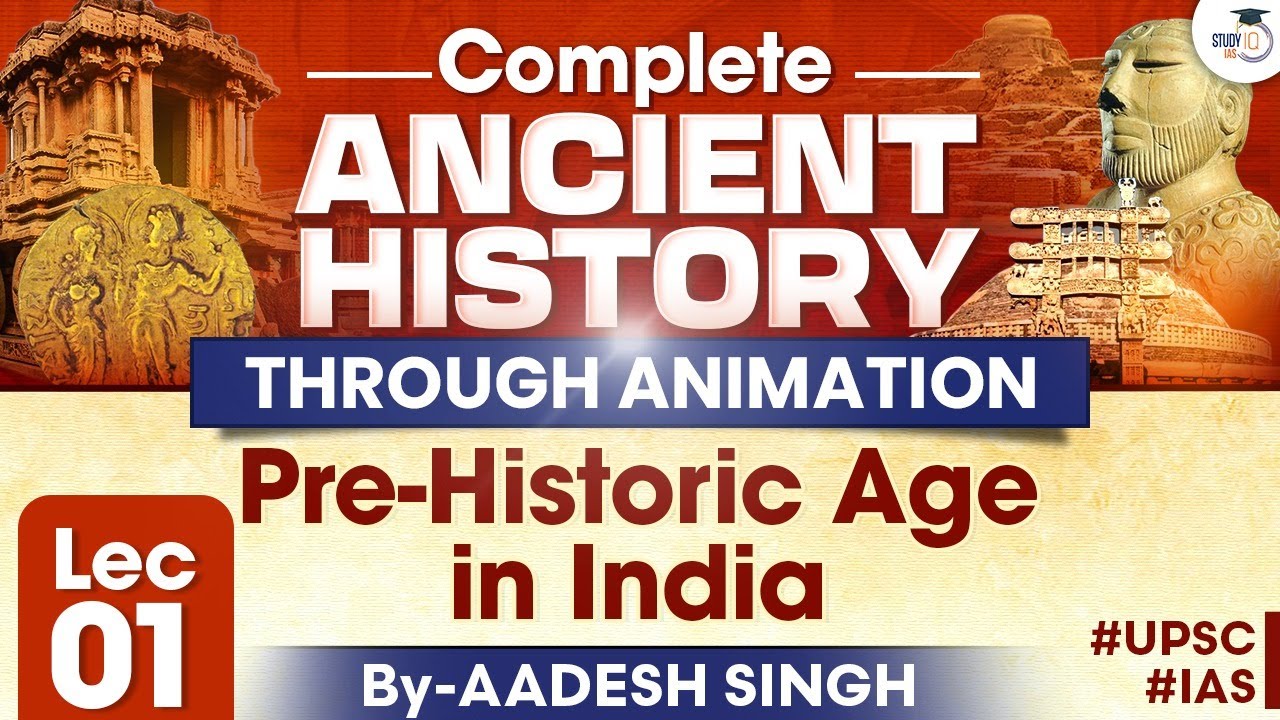CORAK KEHIDUPAN MASYARAKAT PRAAKSARA (Paleolitikum, Mesolitikum, Neolitikum)
Summary
TLDRIn this episode, IDM explores the prehistoric era, focusing on human life before the advent of writing, known as the pre-literate or pre-writing period. The video highlights the two key eras: the Stone Age and the Metal Age. It details the various stages of societal evolution, from simple food gathering and hunting to the development of agriculture and permanent settlements. Viewers learn about ancient tools, nomadic lifestyles, social roles, and early art forms, such as cave paintings, while also discovering cultural shifts like the use of fire and the development of agriculture. The episode concludes with an emphasis on community structure and leadership in early farming societies.
Takeaways
- 📜 Prehistoric times refer to the era before writing was invented, divided into the Stone Age and Metal Age.
- 🪨 The Stone Age is further divided into different periods, including the Paleolithic (Old Stone Age) and Mesolithic (Middle Stone Age).
- 👣 During the Paleolithic era, early humans were hunters and gatherers, living in small nomadic groups, with men hunting and women gathering food.
- 🪓 Stone tools like hand axes, choppers, and flakes were used by early humans for hunting, cutting, and food preparation.
- 🏞️ People in the Paleolithic era lived near sources of water, such as rivers and lakes, for easy access to food and survival needs.
- 🔥 In the Mesolithic era, humans developed the use of fire for cooking, warmth, and protection from wild animals.
- 🏞️ Mesolithic people began to settle in caves or near rivers and practiced cave painting as a symbolic or religious act.
- 🗑️ Large heaps of shellfish remains, called 'kjokkenmoddinger,' were found, indicating early consumption patterns in the Mesolithic period.
- 🌾 The Neolithic period marked the start of farming (food production) and domesticating animals, with tools becoming more refined and specialized.
- 👨🌾 Humans in the Neolithic era lived in more permanent settlements and organized social structures, with designated leaders and defined roles in communities.
Q & A
What does the term 'praaksara' mean?
-'Praaksara' refers to the period before the existence of writing. It describes a time when humans did not yet know how to write.
What are the two main eras of the praaksara period?
-The praaksara period is divided into two eras: the Stone Age (Zaman Batu) and the Metal Age (Zaman Logam), each with distinct lifestyles.
What was life like during the early food-gathering period of the Stone Age?
-During the early food-gathering period, people were nomadic, moving from place to place in search of food and water. They hunted animals and gathered plants for sustenance, living in small groups.
Who were the main human species during the Paleolithic period?
-The main human species during the Paleolithic period were Meganthropus, Pithecanthropus, and Homo.
What were some of the tools used by humans during the Paleolithic era?
-Humans used simple and crude tools during the Paleolithic era, such as hand axes, choppers, and tools made from stone, wood, and animal bones. Examples include the hand axe (kapak genggam), chopper (kapak perimbas), and flakes.
How did social life change in the advanced food-gathering period?
-In the advanced food-gathering period, humans started to develop better survival techniques. They discovered fire, which they used for cooking, warmth, and protection. While still semi-nomadic, they began to live in caves and settled near water sources.
What significance did cave paintings have during the Mesolithic period?
-Cave paintings, such as handprints found in Leang-Leang (Sulawesi) and Papua, were likely early expressions of spiritual beliefs. They may have represented protection from evil spirits or the journey of the deceased through the spiritual world.
What does the term 'kjokkenmoddinger' refer to?
-'Kjokkenmoddinger' refers to ancient kitchen waste piles, mainly consisting of shells and bones, found along the coastlines. These are evidence of early human settlements near water sources.
How did human life evolve during the Neolithic (agriculture) period?
-During the Neolithic period, humans transitioned from hunting and gathering to farming and animal husbandry. They began to live in permanent settlements, forming small communities and using more refined tools for farming and construction.
What new tools were developed during the Neolithic era?
-New tools developed during the Neolithic era included the oval axe (kapak lonjong), square adze (beliung persegi), and stone arrowheads. These tools were more advanced, reflecting increased human intelligence and precision.
Outlines

This section is available to paid users only. Please upgrade to access this part.
Upgrade NowMindmap

This section is available to paid users only. Please upgrade to access this part.
Upgrade NowKeywords

This section is available to paid users only. Please upgrade to access this part.
Upgrade NowHighlights

This section is available to paid users only. Please upgrade to access this part.
Upgrade NowTranscripts

This section is available to paid users only. Please upgrade to access this part.
Upgrade NowBrowse More Related Video

PERIODISASI SECARA GEOLOGI

Kehidupan Manusia Pada Masa Praaksara - Video IPS Kelas 7

Complete History Through Animation | Lec 1 | Pre-Historic Age in India | By Aadesh Singh

Foucault on history: "The Order of Things"

The Writing Process: Pre-Writing

Teori Masuknya Kebudayaan Hindu-Budha di Indonesia (IPS Kelas VII Semester Genap)
5.0 / 5 (0 votes)